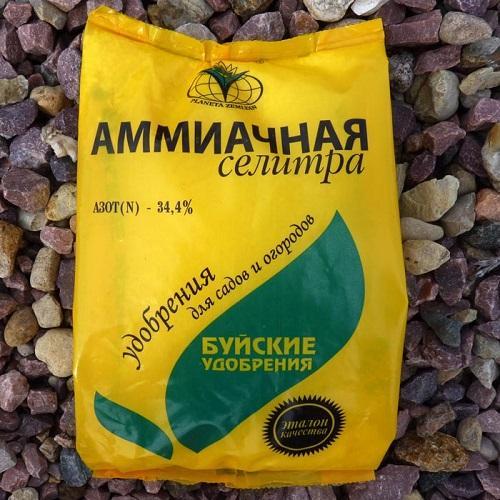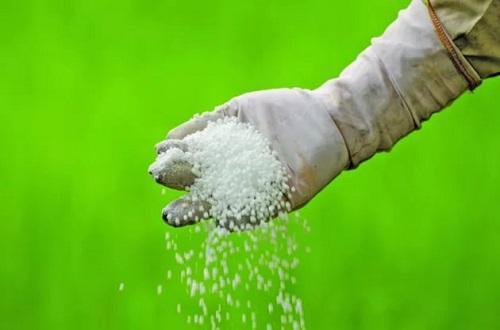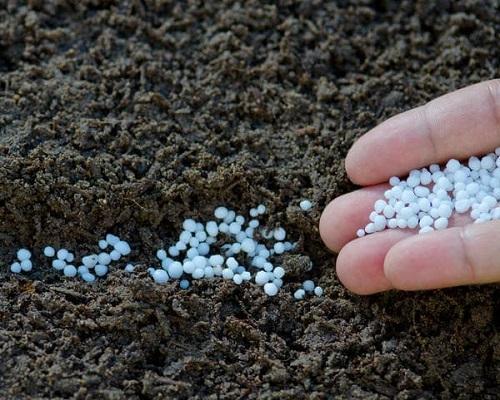Fertilizer ammonium nitrate: application in the vegetable garden for vegetables
Ammonium nitrate - mineral fertilizer, which is widely used in the cultivation of various garden crops. It is produced in the form of small granules in the form of a sphere, white or pink in color.
Characteristics of the drug

The fertilizer contains up to 34% nitrogen. To make it better absorbed by plants, the preparation also contains a small amount of sulfur (up to 14%). The use of ammonium nitrate is limited only to root dressings, direct application to crops in the form of a solution can provoke leaf burns, which will lead to the death of plants.
Since the nitrogen that is part of the drug tends to evaporate, after opening the package with fertilizer, it must be used in the next month. Sealed saltpeter can be stored for no more than six months in a cool place, protected from sunlight.
When the fertilizer heats up to 33 degrees, it can explode.
The action of ammonium nitrate

The main task of fertilization is to provide growing crops with nitrogen. However, fertilizer also serves as a good protection for plants from various bacteria and fungi that accumulate in the soil. This is especially important in cases where it is not possible to comply with crop rotation. A characteristic feature of ammonium nitrate is its action at low temperatures.
Simultaneous introduction of ammonium nitrate with sawdust, straw or other "combustible" substances is not allowed. In the process of interaction, they can catch fire.
Features of the use of ammonium nitrate

Like all nitrogen fertilizers, ammonium nitrate is used in spring and summer when garden crops are actively growing and need nitrogen. The first application to the garden can be done even before planting, by scattering the granules over the site and covering them with a rake into the soil. For 1 sq. m. of land will require from 20 to 50 g of the drug, depending on the composition of the soil. This will be the main feeding.
In the future, ammonium nitrate fertilizer is used in the garden as an additional feeding of vegetables:
- When planting seedlings of tomatoes, peppers and melons - add 1 tbsp. l. saltpeter in each well and water well.
- When planting potatoes, also add to the holes.
- During the summer feeding of plants, when they bloom and form ovaries, scatter fertilizer over the site at the rate of 5 g per 1 sq. m.
- For fertilization of root crops - single top dressing by introducing the drug in the aisle (or furrow) at 5 g per 1 sq. m. It should be done 3 weeks after germination.
- For watering plants during the growing season - prepare a solution of 30 g of the drug and a bucket of water. Pour at the root, avoiding contact with the leaves. It is better to do liquid feeding of potatoes during the first hilling.
It is not recommended to fertilize pumpkin, cucumbers, zucchini and squash with ammonium nitrate in order to avoid the accumulation of nitrates.
The last dressing should be done 15-20 days before harvest.